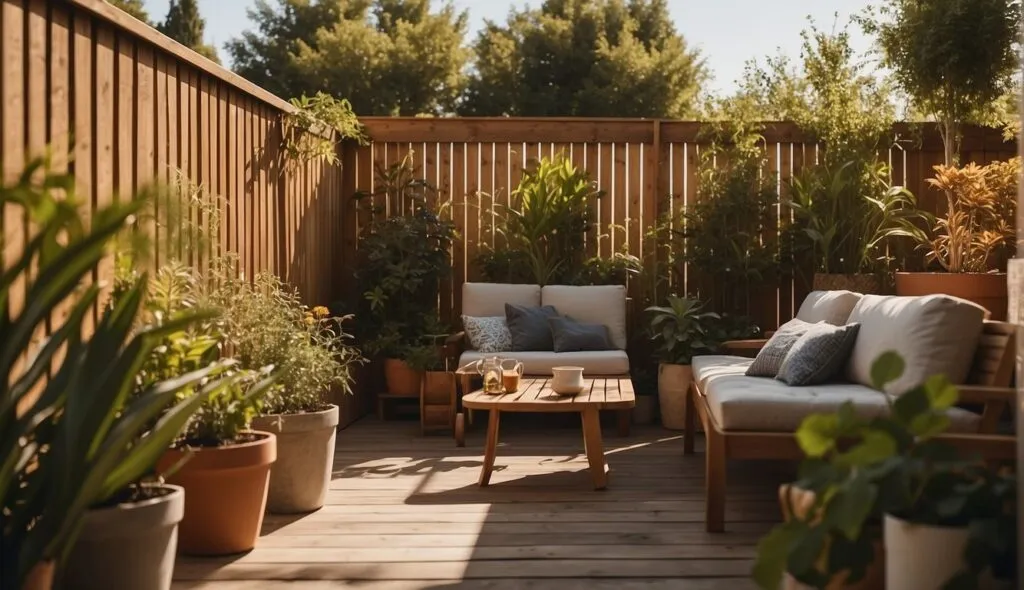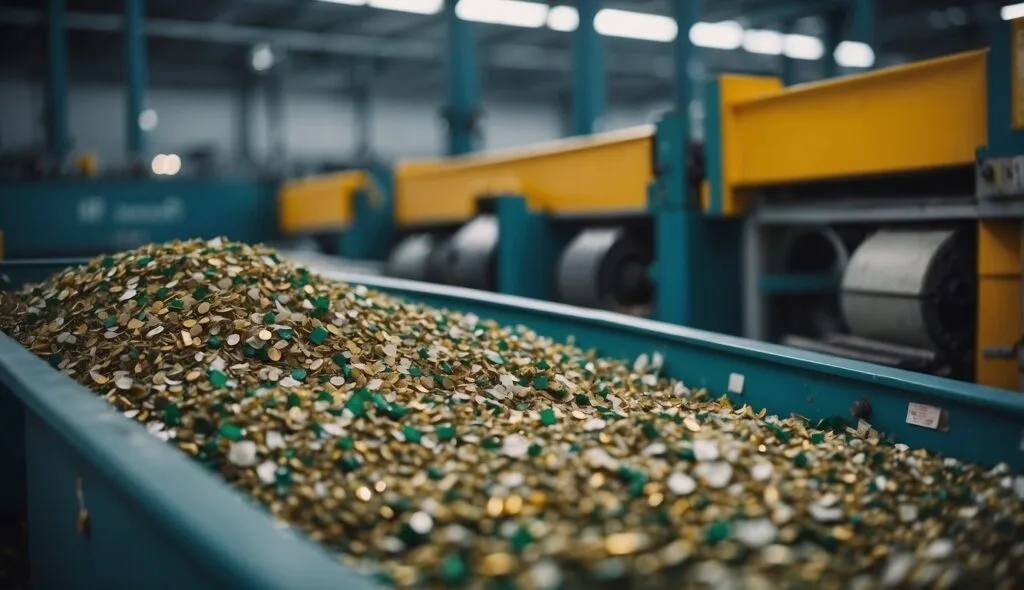Sustainable screen decor is a great way to reduce your environmental impact while adding a touch of style to your home. With so many eco-friendly options available, it’s easy to find a design that matches your personal taste and values. From sustainable materials and fabrics to energy-efficient lighting, there are many ways to create a sustainable and stylish living space.

One of the most important aspects of sustainable screen decor is the use of environmentally friendly materials and fabrics. By choosing materials that are sustainably sourced and produced, you can reduce your carbon footprint and support sustainable practices. Examples of sustainable materials include bamboo, recycled plastic, and reclaimed wood, all of which can be used to create beautiful and functional screens.
Eco-friendly furniture design is another important aspect of sustainable screen decor. Many furniture designers are now incorporating sustainable materials and practices into their designs, creating pieces that are both stylish and environmentally friendly. From sofas and chairs to coffee tables and bookshelves, there are many eco-friendly furniture options available that can help you create a sustainable and stylish living space.
Table of Contents
Key Takeaways
- Sustainable materials and fabrics are an important aspect of sustainable screen decor.
- Eco-friendly furniture design is a great way to reduce your environmental impact while adding style to your home.
- Energy-efficient lighting and indoor air quality are other important considerations for sustainable screen decor.
Sustainable Materials and Fabrics
Decorating with sustainable materials and fabrics is an excellent way to create an eco-friendly home. Using natural materials like bamboo, jute, linen, and hemp can help reduce the carbon footprint of your home decor. These materials are biodegradable, recyclable, and sustainable, making them a great choice for those who want to create an eco-friendly living space.
Organic cotton is another sustainable fabric that is becoming increasingly popular. It is grown without the use of harmful pesticides and chemicals, making it an eco-friendly alternative to traditional cotton. Organic cotton is also biodegradable and recyclable, making it an excellent choice for sustainable home decor.
Recycled materials are another great option for sustainable home decor. Recycled materials like glass, metal, and plastic can be repurposed into beautiful and functional decor pieces. These materials are also recyclable, making them a sustainable choice for those who want to reduce their environmental impact.
Using natural fibers like wool and silk can also be a sustainable choice. These materials are biodegradable and renewable, making them an excellent choice for those who want to create a sustainable home. Additionally, they are often produced using environmentally friendly methods, making them a great choice for eco-conscious consumers.
In summary, using sustainable materials and fabrics is an excellent way to create an eco-friendly home. By choosing materials that are biodegradable, recyclable, and sustainable, you can help reduce your environmental impact while creating a beautiful and functional living space.
Eco-Friendly Furniture Design

Sustainable furniture is an essential element of eco-friendly decor. It is a perfect way to reduce the carbon footprint and make a positive impact on the environment. Eco-friendly furniture is made from recycled, upcycled, and reclaimed materials, which reduces the amount of waste that ends up in landfills.
Reclaimed and Upcycled Elements
Reclaimed wood is a popular choice for eco-friendly furniture design. It is an excellent way to incorporate natural elements into the decor while also reducing waste. Reclaimed wood furniture is durable, long-lasting, and adds a rustic charm to any room. Upcycling is another way to create eco-friendly furniture. Upcycling involves taking old, unused items and transforming them into something new and functional.
Local Artisans and Handcrafted Details
Eco-friendly furniture design is not just about using recycled and reclaimed materials. It’s also about supporting local artisans and their craft. Local artisans create high-quality pieces that are handcrafted with attention to detail. These pieces are unique and add character to any space. Handcrafted furniture also lasts longer than mass-produced furniture, reducing the need for replacements and waste.
In summary, eco-friendly furniture design is an essential element of sustainable decor. Reclaimed and upcycled materials, as well as local artisans and handcrafted details, are some of the ways to create eco-friendly furniture. By choosing sustainable furniture, one can reduce their carbon footprint and make a positive impact on the environment.
Indoor Air Quality and Health

Indoor air quality is an important aspect of home decor that is often overlooked. Poor indoor air quality can lead to health problems such as allergies, respiratory issues, and headaches. It is important to choose sustainable decor options that not only look good but also purify the air and promote good health.
One way to improve indoor air quality is to choose non-toxic finishes for furniture and decor items. These finishes do not emit volatile organic compounds (VOCs) which are harmful to human health. Using low VOC paint is also a great way to reduce VOC emissions and improve indoor air quality.
In addition to using non-toxic finishes and low VOC paint, incorporating indoor plants is another effective way to purify the air and improve indoor air quality. Plants absorb toxins and release oxygen, which makes the air cleaner and fresher. Some great air-purifying plants include spider plants, peace lilies, and snake plants.
Improving indoor air quality not only has health benefits but also contributes to a more sustainable home. By choosing sustainable decor options that promote good health, homeowners can create a beautiful and healthy living space.
Energy Efficiency and Lighting

When it comes to sustainable home decor, energy-efficient lighting is a must-have. LED bulbs and compact fluorescent lights (CFLs) are two great options that can help reduce electricity bills and save energy. LED lights are the most energy-efficient type of light bulb available, using up to 90% less energy than traditional incandescent bulbs and lasting up to 25 times longer. CFLs are another energy-efficient option, using about 75% less energy than incandescent bulbs and lasting longer as well.
In addition to using energy-efficient lighting, homeowners can also consider installing solar panels to power their home with solar energy. While solar panels can be an expensive investment upfront, they can pay for themselves over time by reducing energy bills and even generating income through selling excess energy back to the grid.
Another way to save energy and reduce energy bills is to insulate the home properly. This can be done by adding insulation to the walls, ceiling, and floors, as well as sealing any air leaks around windows and doors. By keeping the home well-insulated, homeowners can reduce their reliance on heating and cooling systems, which can be a major source of energy consumption.
Overall, incorporating energy-efficient lighting and solar energy into home decor can help reduce energy bills and save energy, making it a great investment for homeowners looking to create a sustainable home.
Conclusion

In conclusion, sustainable screen decor ideas are a great way to enhance the look and feel of your home while reducing your environmental impact. By choosing eco-friendly decor options, you can reduce your carbon footprint and make a positive impact on the planet.
Sustainable living is becoming increasingly important in today’s world, and sustainable home decor is a great way to contribute to this movement. By choosing timeless decor pieces made from sustainable materials, you can create a beautiful and functional space that will last for years to come.
Creativity is key when it comes to sustainable screen decor ideas. Upcycling old screen doors and repurposing them into functional pieces of decor is a great way to reduce waste and add unique touches to your home.
It’s important to consider the environmental impact of the decor pieces you choose for your home. By choosing eco-friendly materials and supporting local small businesses, you can reduce your carbon footprint and make a positive impact on the planet.
Overall, sustainable screen decor ideas are a great way to create a beautiful and functional space while also making a positive impact on the environment. With a little creativity and knowledge, anyone can create a sustainable and eco-friendly home decor.
Frequently Asked Questions

What materials are best for creating sustainable home decor?
Sustainable home decor can be made from a variety of materials, including bamboo, reclaimed wood, recycled glass, and organic cotton. These materials are environmentally friendly and can be sourced ethically. Bamboo, for instance, is a fast-growing, renewable resource that can be used for furniture, flooring, and home accessories. Reclaimed wood is another popular choice, as it gives new life to old materials that would otherwise be discarded. Additionally, recycled glass can be used for lighting fixtures or decorative accents, while organic cotton can be used for bedding, curtains, and upholstery.
How can I upcycle items for unique room decorations?
Upcycling is a great way to create unique and sustainable home decor. By repurposing old items, you can give them new life and keep them out of landfills. For example, old mason jars can be turned into vases or candle holders, while vintage suitcases can be used as end tables or storage containers. Wine corks can be used to create a unique bulletin board, and old picture frames can be turned into a gallery wall. The possibilities are endless, and upcycling can be a fun and creative way to decorate your home sustainably.
What are some ways to reduce waste when decorating?
Reducing waste is an important part of sustainable home decor. One way to do this is to choose quality, durable pieces that will last for years to come. Another way is to repurpose or upcycle old items, as mentioned above. Additionally, choosing eco-friendly materials and products can help reduce waste. For example, using washable, reusable cloth napkins instead of disposable paper ones can significantly reduce waste. Finally, donating or selling old items instead of throwing them away can keep them out of landfills and give them new life.
How can energy-efficient lighting contribute to a sustainable living space?
Energy-efficient lighting can significantly reduce energy consumption and contribute to a sustainable living space. LED light bulbs, for example, use up to 75% less energy than traditional incandescent bulbs and can last up to 25 times longer. Additionally, installing dimmer switches can help reduce energy usage and create a cozy, inviting atmosphere. Finally, using natural light whenever possible can also reduce energy consumption and create a bright, airy living space.
What brands offer environmentally responsible decor options?
Many brands offer environmentally responsible decor options, including West Elm, Boll & Branch, and The Citizenry. These brands prioritize sustainability and use eco-friendly materials and production methods. Additionally, many independent makers and artisans offer sustainable home decor options on platforms like Etsy. When shopping for sustainable home decor, look for certifications like Fair Trade, GOTS, and Forest Stewardship Council (FSC) to ensure that products are ethically sourced and environmentally responsible.
How can I incorporate plants into my home for a greener interior?
Plants are a great way to incorporate greenery into your home and create a more sustainable living space. Not only do plants purify the air and add visual interest, but they can also reduce stress and improve mood. When choosing plants, look for low-maintenance options like snake plants, pothos, and spider plants. These plants require minimal watering and can thrive in a variety of lighting conditions. Additionally, consider using planters made from eco-friendly materials like bamboo, recycled plastic, or reclaimed wood.


